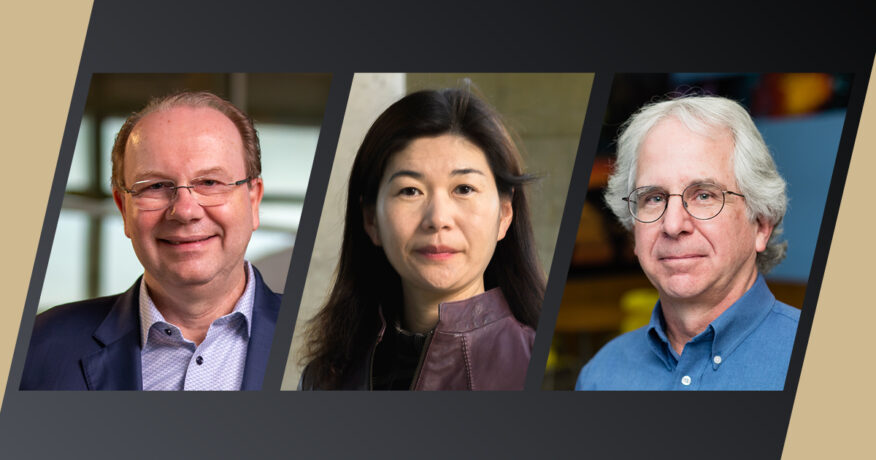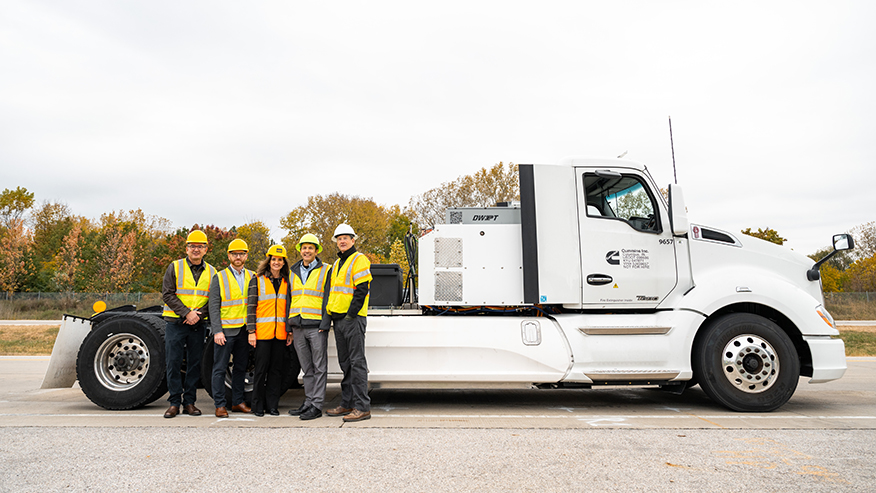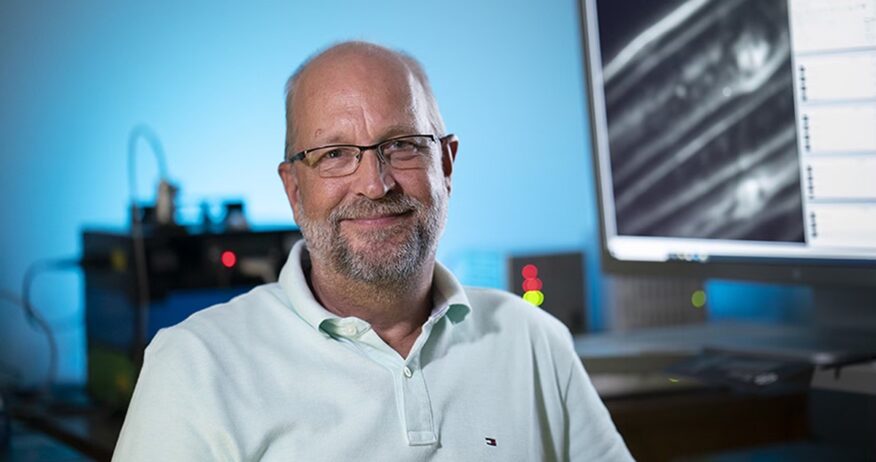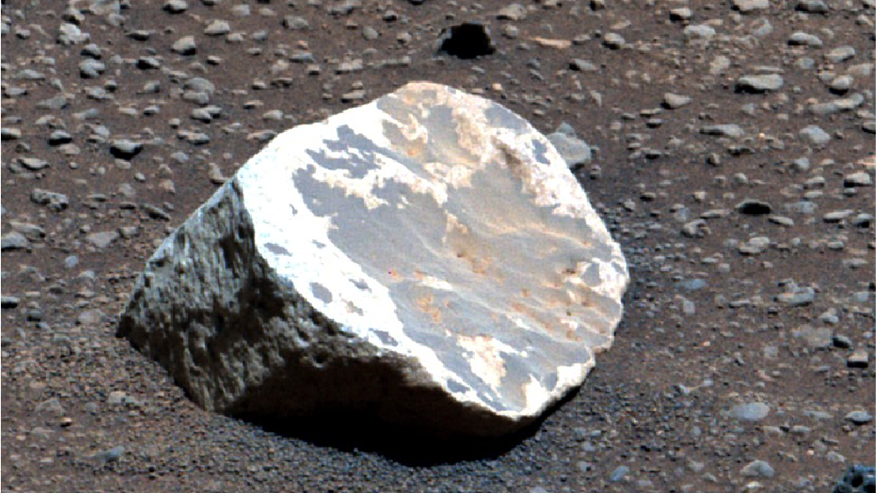Purdue reputation in space brings better understanding of the stars, planets and everything in between
Researchers enabling air conditioning on Mars, studying an ancient star explosion and analyzing the newest OSIRIS-REx asteroid samples

Space missions past, present and future are using discoveries from Purdue University scientists and engineers. (Photo courtesy of NASA/Terry Virts)
WEST LAFAYETTE, Ind. —
Purdue University isn’t just the Cradle of Astronauts. Honoring decades of tradition, key discoveries from Purdue space scientists and engineers are advancing knowledge of the universe and missions to the moon or Mars.
Additional Information
James Webb Space Telescope images
Dan Milisavljevic is an astronomer and an expert on star explosions. An associate professor of physics and astronomy in Purdue’s College of Science, Milisavljevic (pronounced mili-sahv-la-vich) leads a project team studying images from the James Webb Space Telescope of Cassiopeia A, a star explosion that happened ten thousand years ago.
- More info: Star of wonder: Dazzling new image of supernova Cassiopeia A released by First Lady Jill Biden and Purdue astronomer
- Source: Dan Milisavljevic, dmilisav@purdue.edu, available video (accessible with an Associated Press subscription)
- Media contact: Brittany Steff, bsteff@purdue.edu
Living long-term on the moon or Mars
To help humans live on the moon or Mars, a Purdue experiment on the International Space Station is collecting the data needed to enable heat and air conditioning that can operate long term in reduced gravity and temperatures hundreds of degrees above or below what we experience on Earth. Issam Mudawar, Purdue’s Betty Ruth and Milton B. Hollander Family Professor of Mechanical Engineering, leads the project.
- More info: Science enabling heat and air conditioning for long-term space habitats is almost fully available
- Source: Issam Mudawar, mudawar@purdue.edu, available video
- Media contact: Kayla Albert, wiles5@purdue.edu
Spacecraft metals in Earth’s atmosphere
Dan Cziczo, a professor and head of the Department of Earth, Atmospheric, and Planetary Sciences in Purdue’s College of Science, was part of a team that discovered significant amounts of metals from spacecraft may be impacting Earth’s atmosphere and ozone layer. Cziczo is an expert in atmospheric science who has spent decades studying this rarefied region.
- More info: Signatures of the Space Age: Spacecraft metals left in the wake of humanity’s path to the stars
- Source: Dan Cziczo, djcziczo@purdue.edu, available video
- Media contact: Brittany Steff, bsteff@purdue.edu
“Parking spots” in space
David Arnas, a Purdue assistant professor of aeronautics and astronautics, studies how to design “parking spots” for satellites to help prevent collisions and overcrowding both in areas closer to Earth, where many of these available locations have already been taken, and in other parts of space that will soon see an increase in satellite population, such as the large area between Earth and the moon called the cislunar region.
- More info: Space needs better ‘parking spots’ to stay usable — an engineer is finding them
- Source: David Arnas, darnas@purdue.edu
- Media contact: Kayla Albert, wiles5@purdue.edu
Bringing home asteroids
Michelle Thompson is a planetary scientist and expert in how asteroids, moons and other planetary bodies react with space — a process called space weathering. She is one of the first six humans — and the first woman — to analyze samples of asteroid Bennu brought to Earth by OSIRIS-REx. Thompson is an associate professor of earth, atmospheric, and planetary sciences in Purdue’s College of Science.
- More info: Bringing home asteroids: Purdue scientist is among the first to examine asteroid pieces from NASA’s OSIRIS-REx mission
- Source: Michelle Thompson, mthompson@purdue.edu, available video
- Media contact: Brittany Steff, bsteff@purdue.edu
Space junk between Earth and the moon
To prevent spacecraft from running into each other, Purdue engineer Carolin Frueh is investigating how to observe and keep track of all human-made objects and predict the impact of their potential damage in near-Earth orbits and the cislunar region. Frueh is the university’s Harold DeGroff, Jr., Associate Professor of Aeronautics and Astronautics.
- More info: Preventing traffic accidents to the moon and back
- Source: Carolin Frueh, cfrueh@purdue.edu, available video
- Media contact: Kayla Albert, wiles5@purdue.edu
About Purdue University
Purdue University is a public research institution with excellence at scale. Ranked among top 10 public universities and with two colleges in the top four in the United States, Purdue discovers and disseminates knowledge with a quality and at a scale second to none. More than 105,000 students study at Purdue across modalities and locations, with 50,000 in person on the West Lafayette campus. Committed to affordability and accessibility, Purdue’s main campus has frozen tuition 13 years in a row. See how Purdue never stops in the persistent pursuit of the next giant leap, including its first comprehensive urban campus in Indianapolis, the new Mitchell E. Daniels, Jr. School of Business, and Purdue Computes, at https://www.purdue.edu/president/strategic-initiatives.
Media contacts: Brittany Steff, bsteff@purdue.edu; Kayla Albert, wiles5@purdue.edu
Sources: Dan Milisavljevic, dmilisav@purdue.edu; Issam Mudawar, mudawar@purdue.edu; Dan Cziczo, djcziczo@purdue.edu; David Arnas, darnas@purdue.edu; Michelle Thompson, mthompson@purdue.edu; Carolin Frueh, cfrueh@purdue.edu



